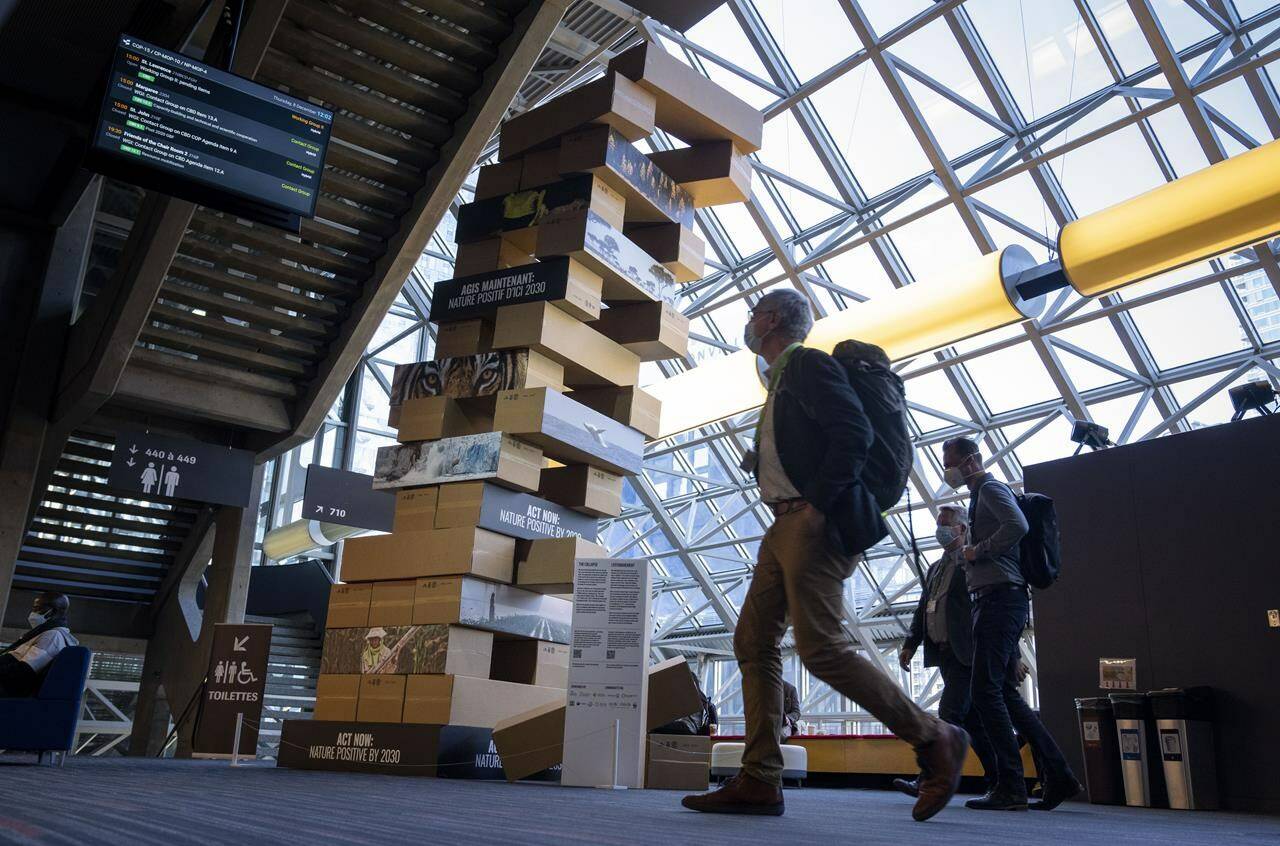Developing countries have walked out of a global conference on conserving the world’s biodiversity over concerns that talks about how those efforts should be funded are lagging behind those on how much land and water should be set aside.
“We feel that negotiations have not been moving at the same pace,” said a delegate from one of the countries that left the COP15 talks in Montreal at about 1 a.m. Wednesday.
“We feel that resource mobilization has been left behind.”
The delegate, who asked not to be named, said rich countries have been happy to talk about specific targets for conservation. The marquee goal of the conference is a deal on setting aside 30 per cent of the globe’s land and water.
But he said those countries have not been so willing to come up with a number on how much they’re willing to pay.
“Why are we discussing figures on targets in every other part of the text?” the delegate asked.
Most of the world’s biodiversity is located in the poorer countries of the global south. Most of the wealth — much of which was created at the expense of the world’s biodiversity — exists in the north.
“It’s everyone’s problem, but we are not equally responsible for the drivers that have led to the destruction of biodiversity,” said the delegate. “This is an issue of fairness.”
Estimates of how much money is involved range fromUS$200 billion to US$700 billion a year, including the redirection of public subsidies from projects that damage biodiversity to those that support it.
Any framework deal on preserving biodiversity will fail in the implementation if it’s not adequately resourced, the delegate said.
“We do want those goals and targets to be approved. (But) the global biodiversity framework needs to move together as a whole and that has not been happening.”
Delegates have disagreed on whether the money should be funnelled through a new fund or existing channels. Transparency and disclosure are also topics of discussion.
Francis Ogwal, co-chair of one of the working groups attempting to reach a deal, said the attempt to agree on both preservation and funding targets together makes this round of negotiations different from previous ones.
“This time around we said the framework should be a package,” he said. “It should all be done at the same time.”
It isn’t all about money. Discussions also involve technology transfer and capacity building to help funding recipients use resources efficiently.
A meeting was scheduled later Wednesday for all the heads of delegations of countries attending the conference in an attempt to resolve the impasse.
The walkout came as the two-week event entered its final days, with environment ministers from around the world arriving to try to hammer out a final text on the most difficult issues.
The role of private money and industry in preserving enough natural ecosystems to keep the planet functioning was to be the focus of talks Wednesday. Discussions were scheduled on how global capital flows can be harnessed to work with nature rather than exploit it.
Figures from the United Nations suggest those capital flows are now more part of the problem than the solution.
The UN says that in 2019, industries that are eroding biodiversity got money from major investment banks equal to Canada’s entire gross domestic product — an estimated $3.5 trillion.
They say the money devoted to conservation was $200 billionat most.
Climate change and biodiversity are closely linked. Scientists have concluded that it will be impossible to hold global warming to 1.5 C without saving at least one-third of the planet.
The COP15 meetings go on until Monday.
— Bob Weber, Stephane Blais and Morgan Lowrie, The Canadian Press
RELATED: ‘Paris moment:’ COP15 conference in Montreal seeks hard targets on biodiversity
RELATED: Trudeau says 120 countries are ready to agree to 30 by 30 framework at COP15

